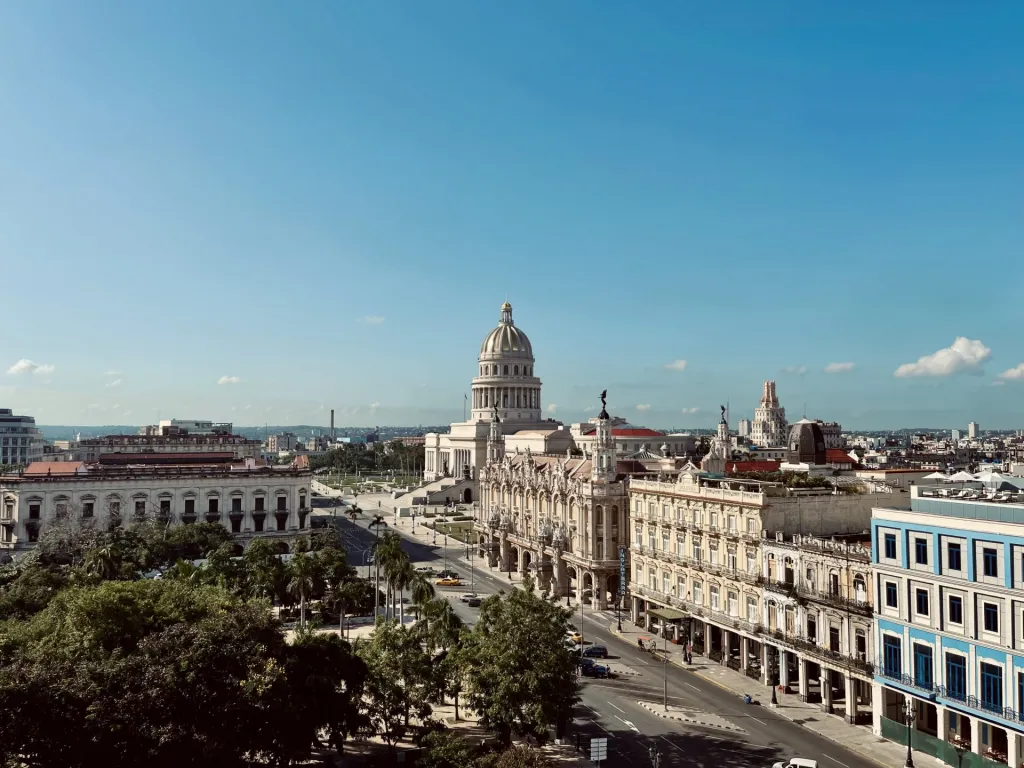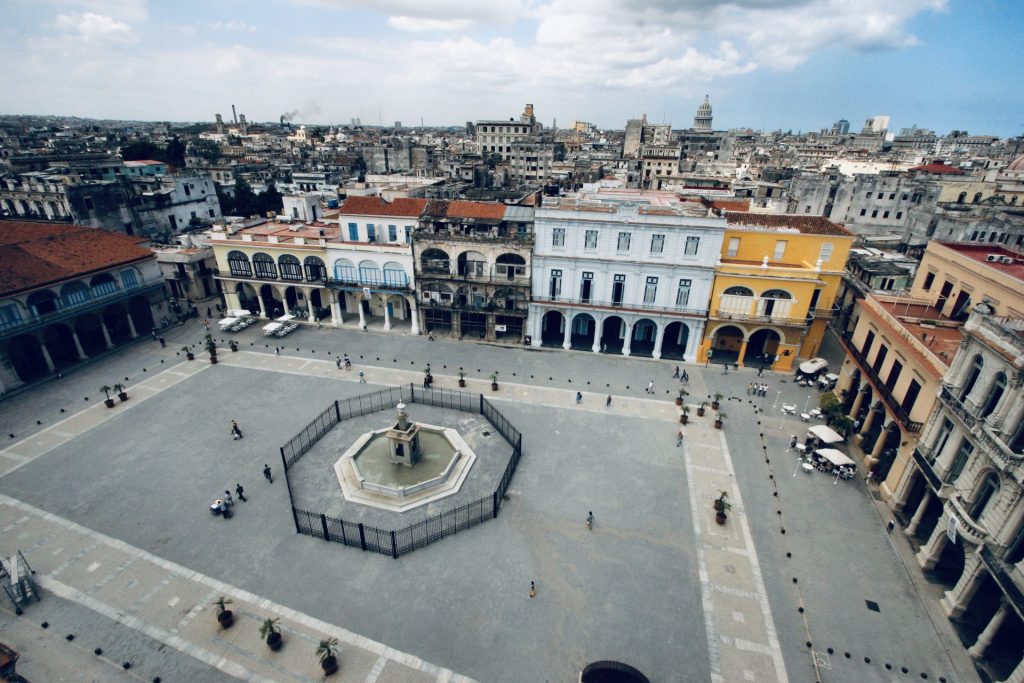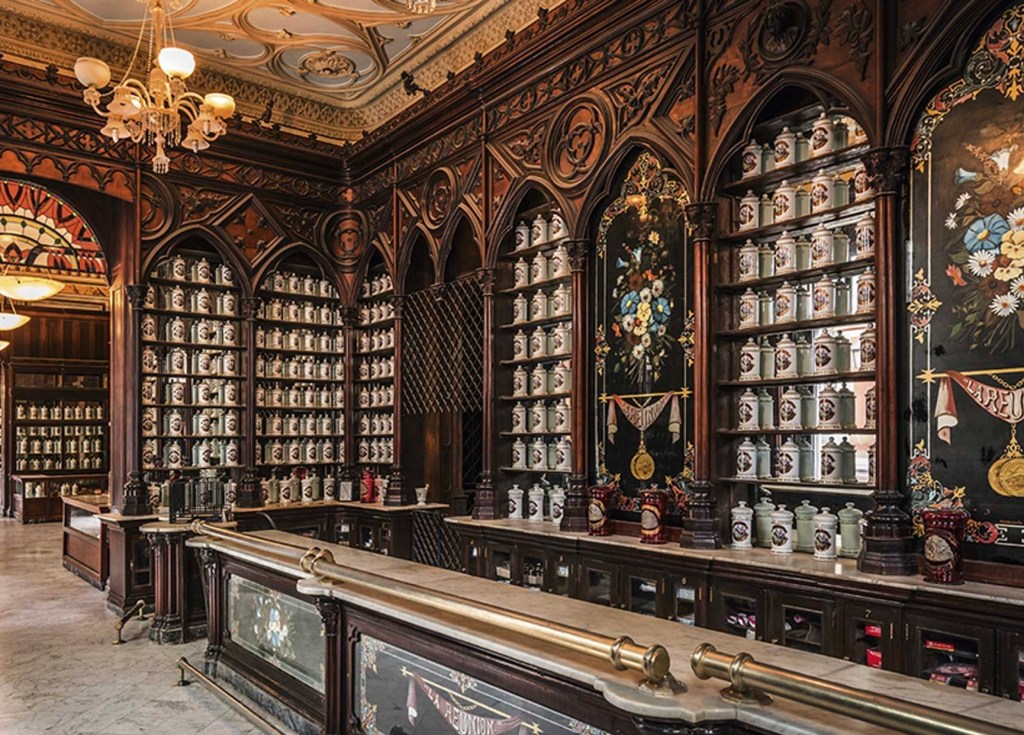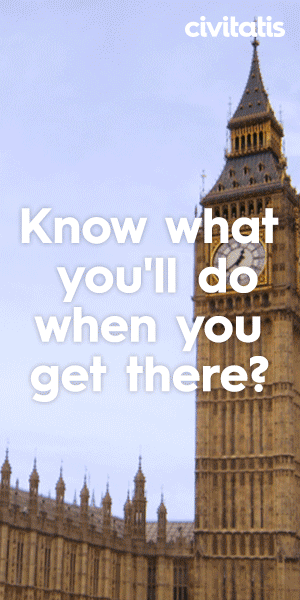Are you planning a trip to Cuba and looking for sites of interest to visit and free things to do in Havana? If yes, this is the post for you.
Most of the sites I’ve listed below are free to visit. And some are near free, with nominal fees of $1-$2 USD to enter. Where appropriate, I’ve also listed the free tours you can take in Havana with English speaking tour guides that visit those sites.
Yes, you can not only visit sites for free, you can visit them for free with a free tour guide! Read on to learn about the 18 budget friendly tourist attractions you can visit while in Havana Cuba.
Free tourist attractions to visit in Havana Cuba
18 Free Or Near Free Things To Do In Havana Cuba
I frequently get asked about the real cost of sightseeing in Havana. Tourists arriving in Cuba are often shocked by prices when negotiating tours and sightseeing activities with locals. And that’s because most of the locals have never traveled outside of Cuba and have no idea what things really cost. So when they try to give you a price and are engaged in price gouging or ‘gringo pricing‘, they just quote ridiculous prices to all the tourist.
In actual fact, most of Cuba’s tourist worthy attractions can be visited for free or near free. With those that aren’t free charging a nominal fee for entry, which goes to the sites upkeep and restoration.
With this list, I’m hoping to give you an idea of what you should try to visit while you’re in Havana, while also making sure you know what it really costs to visit. And after each attraction below, I’ve included its Google Maps location and a link to a free tour with an English speaking guide, that will take you to the particular site.
But, without further ado, here’s the list of 18 sites you should visit while in Havana:
- El Capitolio
- Iglesia y Convento de la Merced
- Castillo de San Salvador de la Punta
- Castillo de la Real Fuerza
- Havana’s Plaza de Armas
- Plaza de San Francisco de Asís
- Plaza Vieja
- Museo de la Farmacia Habanera
- Museo Historico Militar – Exhibición Militar
- Castillo De Los Tres Reyes Del Morro
- Memorial Granma
- Museo Nacional de Bellas Artes
- Museo Nacional de Artes Decorativas
- Monumento a José Martí
- Plaza de la Revolución
- Necrópolis Cristóbal Colón
- Malecón de Habana
- Playa Santa Maria del Mar
The National Capital Building El Capitolio
When in Havana, Cuba, a trip to the National Capitol Building, or El Capitolio, is an absolute must. This iconic public building, often compared to the United States Capitol, is a testament to the rich history and architectural prowess of Cuba.
For about $5 USD, you can take a tour and marvel at the renovated interiors, including the main hall, which houses the golden Statue of the Republic, the third-largest indoor statue in the world. You can also gaze upon the replica diamond that signifies Cuba’s Kilometre Zero.
Don’t forget to explore the serene gardens designed by French landscape architect Jean-Claude Nicolas Forestier. Visiting El Capitolio is a unique experience that offers a palpable sense of Cuban history and culture.
Location: Google Maps here.
Price: The building is free to admire from the outside. To enter the building is about $5 USD and includes a guided tour.
Iglesia y Convento de la Merced
The Iglesia y Convento de la Merced is located in Habana Vieja. It’s unique in that construction began in 1637 and developed slowly until the middle of the 18th Century. The interior of the church was decorated between 1865 and 1867 featuring a mix of local Cuban and foreign artists.
Among those artists whose artworks are featured are the Cubans Chartrand and Miguel Melero. And the French artist Petit and the Spaniards Zuloaga, Murillo and Alonso Cano.
The church is consecrated to the Virgin of La Merced. And is an important site in the Afro-Caribbean religion of Santeria. For a more detailed account of Iglesia y Convento de la Merced.
Location: Google Maps here.
Price: Entry is free and there’s a donation box near the entry. I’d suggest donating as the church is in need of repairs and these are funded by donations.



Castillo de San Salvador de la Punta
The Castillo de San Salvador de la Punta is a stone fortress constructed in the 1590s to protect the entrance to the port of Havana. It’s located on the Malecón and the most interesting facets of its construction are visible from the facade.
You can pay a small entry fee to see inside but there really isn’t much to see inside. Instead, walk around the outside and read the plaques. The plaques outline the various stages of construction and extension that has occurred over the centuries.
Location: Google Maps here.
Price: Free to walk around outside. Pocket change to see inside.
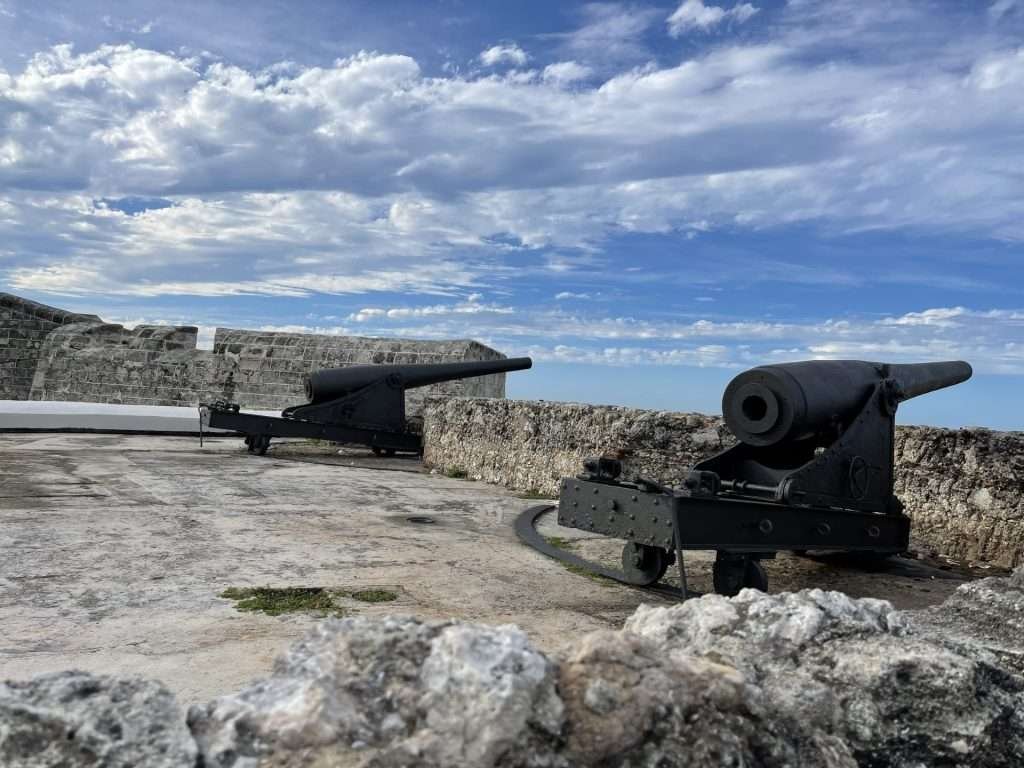

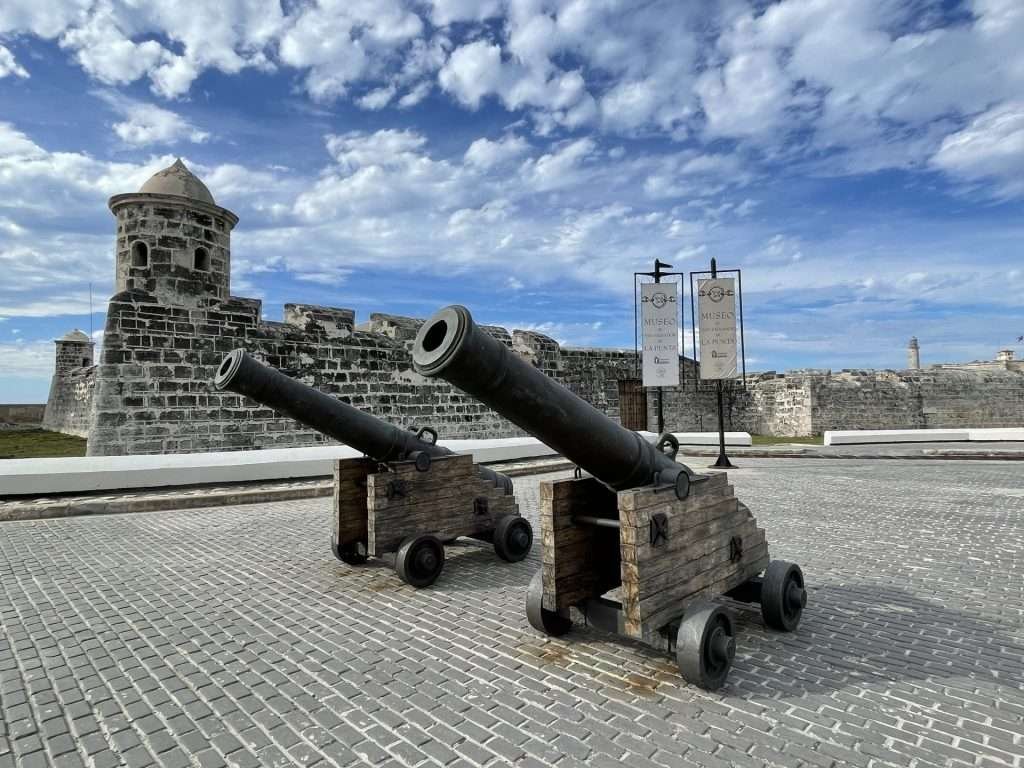
Castillo de la Real Fuerza
The Castillo de la Real Fuerza is a star shaped fort backing onto the Plaza de Armas. It was built in the mid-1500s to cover the entry canal for the port of Havana. Today, the fort houses a maritime museum.
I found the fort itself more interesting than the maritime museum it houses. The Castillo de la Real Fuerza has a star shaped moat around the outside with a drawbridge.
Location: Google Maps here.
Price: Free to walk around the outside areas. Pocket change to enter the museum.



Plaza de Armas
The Plaza de Armas is one of 3 plazas of note in Havana. The Plaza de Armas is the smaller of the three and is more like a park than the type of Plaza de Armas travelers will be familiar with from other Latin American nations.
It’s a great place to sit with a coffee and people watch after seeing the two previous castles. It’s the city’s oldest plaza and is surrounded by restaurants. It also hosts several secondhand book stands.
Location: Google Maps here.
Price to visit: Free

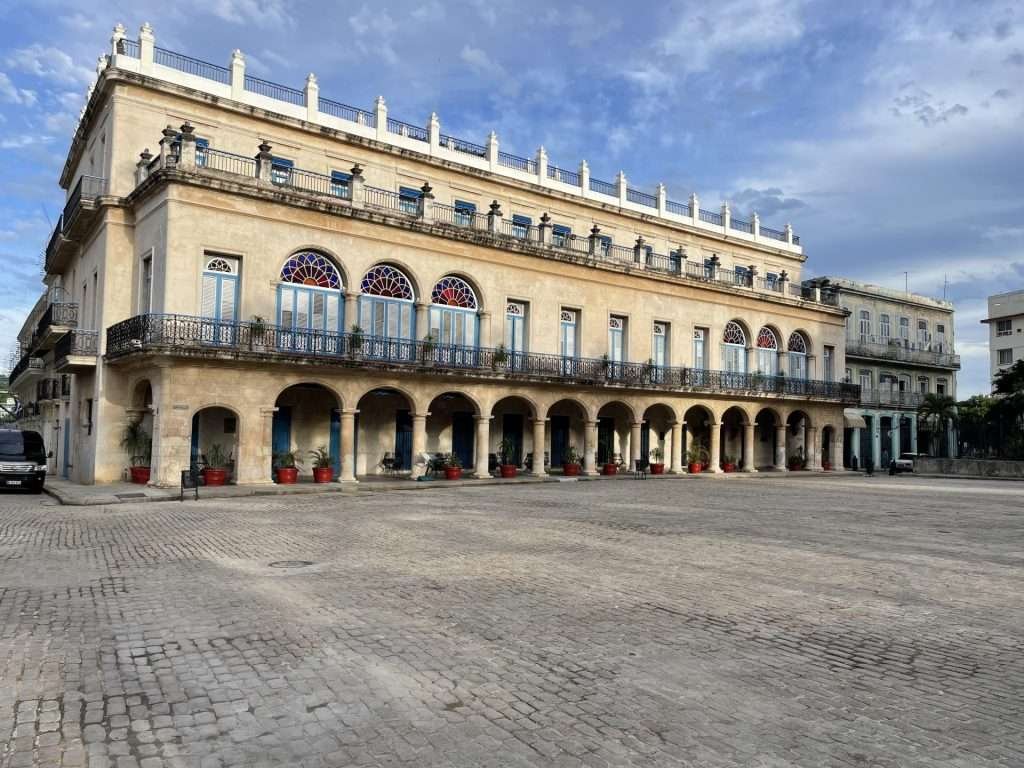

Plaza de San Francisco de Asís
This open cobblestone plaza facing the harbor is home to the Fuente de los Leones fountain. And its named for the St. Francisco de Asís Basilica.
The basilica and its outer walls are worthy of a closer look. The church and monastery date from the 16th century and are now a concert hall and religious art museum. Made from coral stone the intricate shell and coral fossils are visible in the outer walls and are worth admiring.
The plaza is also home to El Caballero de Paris. A bronze life-sized statue dedicated to José María López Lledín. Lledín was a cult like figure in Havana during the 1940s and 1950s.
Location: Google Maps here.
Price: Free to visit the plaza, fountain and statue. Pocket change to see the Basilica and museum.
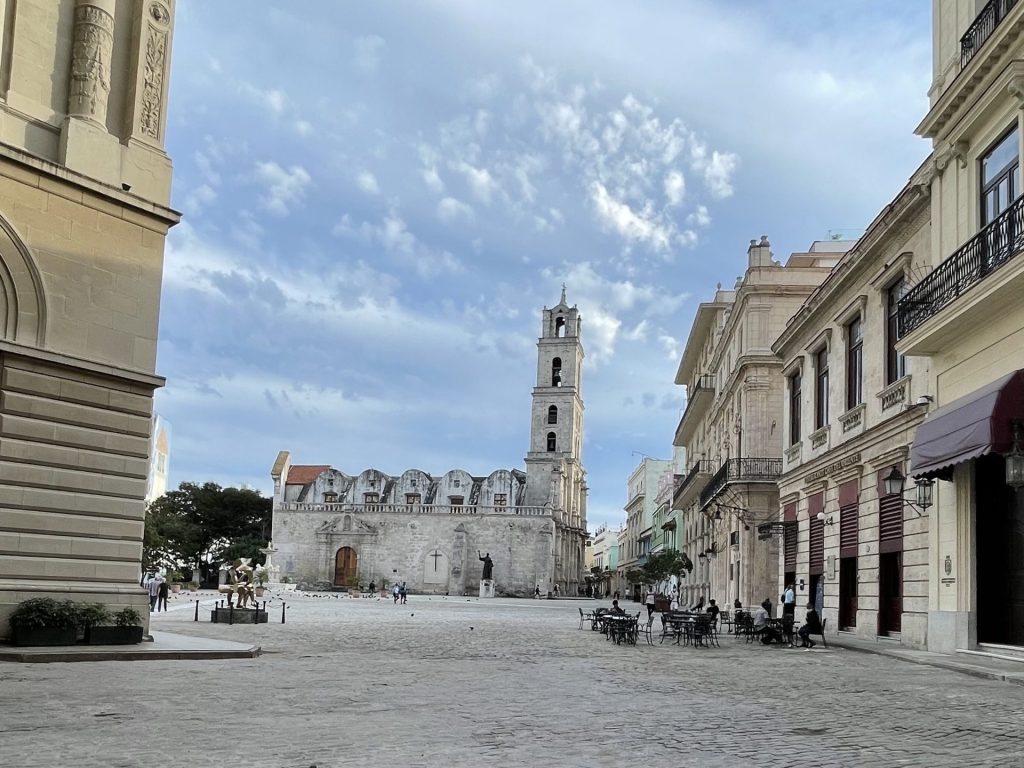

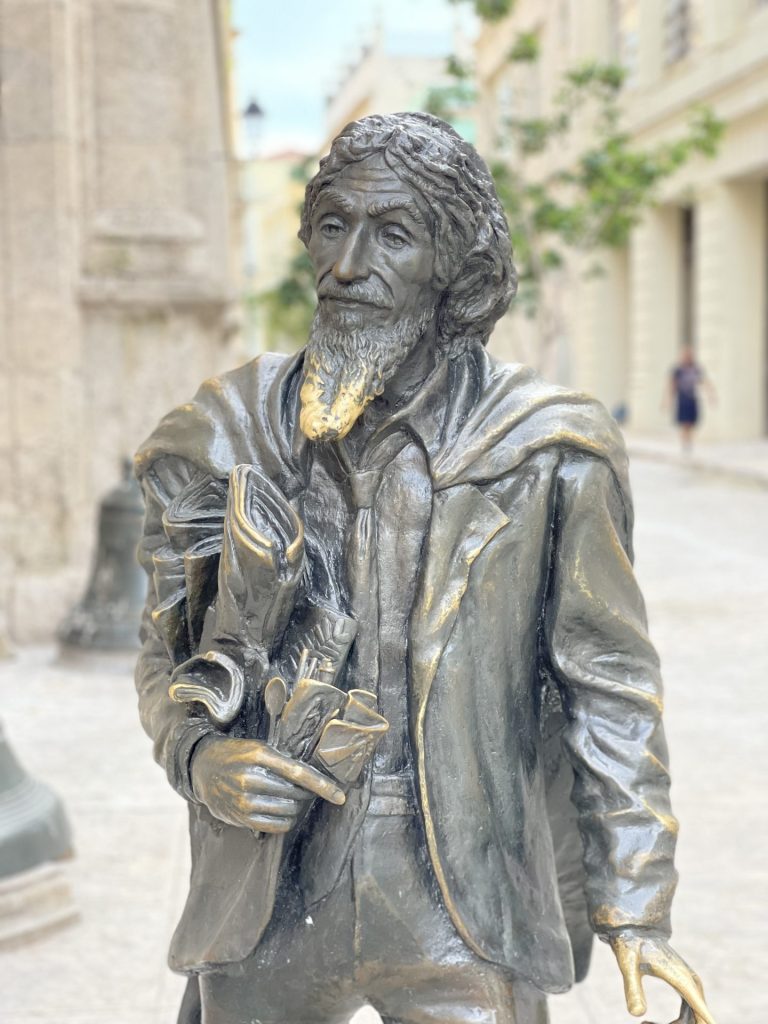
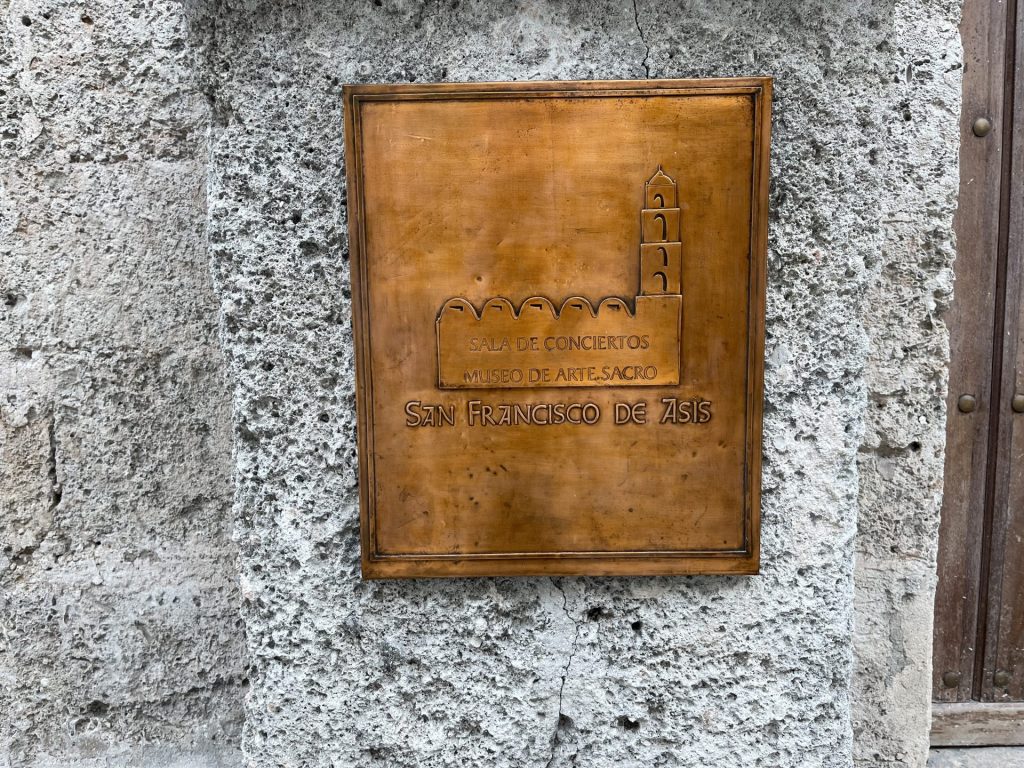
Plaza Vieja
The plaza was originally called Plaza Nueva (New Square). It emerged as an open space in 1559 after construction of the Plaza de Armas and Plaza San Francisco. In colonial times, it was a residential neighborhood of the Criollo plutocracy.
Plaza Vieja was the site of executions, processions, bullfights and fiestas – all witnessed by Havana’s wealthiest citizens who looked on from their balconies.
Today, it’s a great place to get a coffee and people watch. Or sit by the fountain and enjoy the view. There’s also the Cámara Oscura on the corner of the plaza offering photos of the city and a planetarium that is worth seeing.
Location: Google Maps here.
Price to visit: Free
Museo de la Farmacia Habanera
The Museo de la Farmacia Habanera is a working pharmacy and houses a small museum showing vintage cabinets, pots and other items.
It’s worth stoping by when transiting Habana Vieja. Seeing the Museo de la Farmacia Habanera doesn’t take long and it’s quite small. But it’s highly photogenic and I found it most surprising, that it still functions as a real pharmacy!
Location: Google Maps here.
Price: Free. Don’t bother paying to see the museum. Just wander around the open pharmacy.
Museo Historico Militar – Exhibición Militar
The Museo Historico Militar is located across the entry to the port between La Cabaña de Che Guevara and Castillo De Los Tres Reyes Del Morro. It’s near the entry to La Cabaña, also called Fortaleza de San Carlos de la Cabaña.
As an open-air outdoor exhibit, the Museo Historico Militar is free to view. It has everything from old fighter jets and anti-aircraft weapons to ballistic missiles. Definitely worth wandering around and reading the plaques. It can be combined with a trip to any of the destinations around it.
Location: Google Maps here.
Price to visit: Free
Castillo De Los Tres Reyes Del Morro
The Castillo De Los Tres Reyes Del Morro is an iconic symbol of Havana’s seagoing past. And the fort dates back to the late 16th century.
The Castillo De Los Tres Reyes Del Morro is best combined with other points of interest on the eastern side of the harbor. And the Castillo is best visited at around noon on a clear day, or just before sunset for the views it provides over Havana. It’s free to visit and the views can be enjoyed both day and night.
Location: Google Maps here.
Price to visit: Free


Memorial Granma
The Memorial Granma is an open-air memorial displaying the boat Fidel Castro used to transport fighters from Mexico to Cuba. In edition to Castro’s boat, the museum has old fighter airplanes, armored personnel carriers, tanks and classic vehicles.
It’s location next door to the Museo Nacional de Bellas Artes make it easy to combine with other sights and attractions.
Location: Google Maps here.
Price to visit: Free
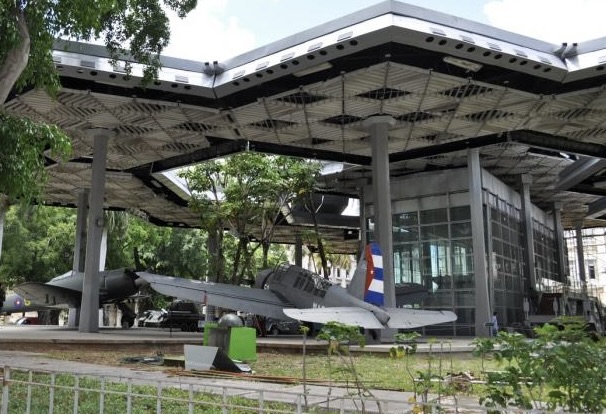
Museo Nacional de Bellas Artes
The Museo Nacional de Bellas Artes houses a large collection of both Cuban and international artists. Spanning works from the 17th century to the present, it covers every conceivable style with a large collection of hyperrealism and artworks featuring strong symbolic imagery related to the Revolution.
Some artworks held in the collection are subject of controversy. Having been reclaimed during the Revolution. The site covers multiple floors and takes at least 3hrs to see in its entirety. There’s also a cafe on site that provides a welcome respite between collections.
Location: Google Maps here.
Price: Pocket change.




Museo Nacional de Artes Decorativas
The Museo de Artes Decorativas is an elaborate neoclassical mansion in Vedado. The museum is dedicated to decorative art, furniture and figurines. It provides an interesting glimpse into the lives of the monied classes in Havana prior to the Revolution.
I found quite interesting the exhibit showing how wealthy individuals fleeing the island during the revolution, stashed all their silverware in the walls and bricked up cellars. I also quite liked the infographics showing the history of the house and its former owners.
The Museo Nacional de Artes Decorativas does charge a small fee for entry. But the ticket price comes with a personal guide who will walk you through the house and tell you about its history and collections.
Location: Google Maps here.
Price: 200 CUP (less than $1USD at the informal cuban exchange rate).

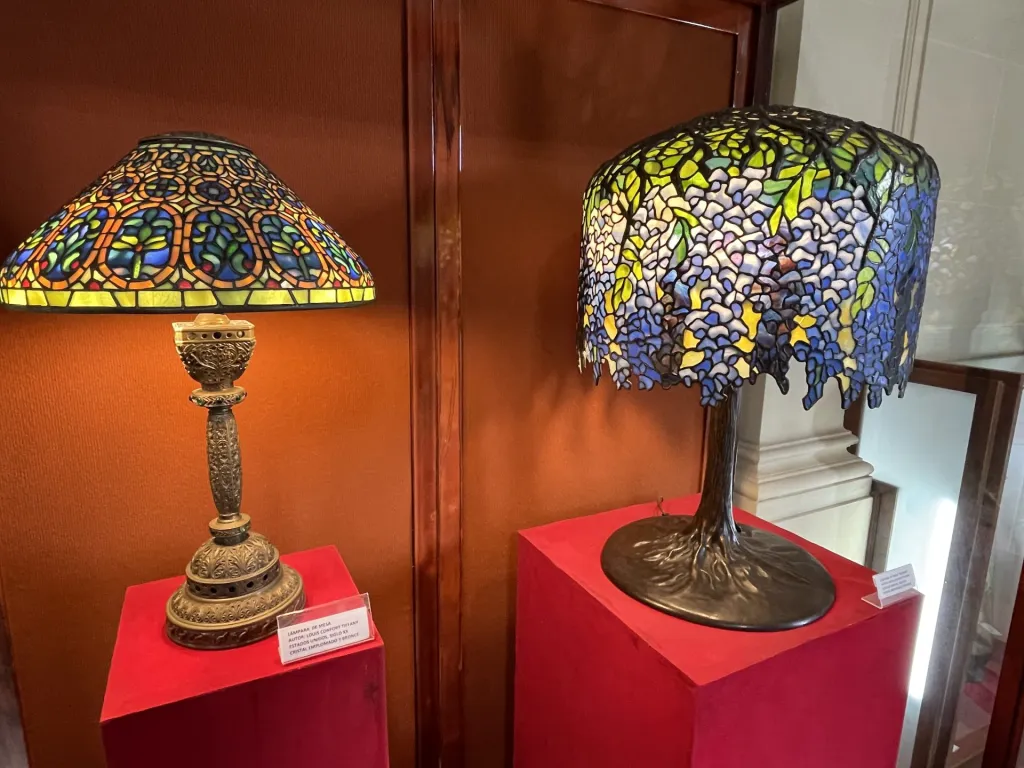

Monumento a José Martí
The José Martí Memorial monument is adjacent to Revolution Square in the suburb of Vedado.
Sometimes the museum is open inside and other times, not. At times you can walk up to the statue of Martí and other times, not. Sometimes you can take a photo of the monument and other times, not. It’s hit or miss. Any advertised opening times and rules are rarely adhered too.
Personally, having at least one degree in philosophy, I was keen to learn more about José Martí and his works. So I wen’t twice. Both times had different rules and no entry.
All in, I’d say it’s worth seeing while visiting Revolution Square to watch the Che and Cienfuegos monuments light up. But I wouldn’t bother too much with trying to see the Museum in the José Martí memorial. Because you could end up wasting your time and money.
In the end, I kept getting differing rules from the mall cops guarding the site, as to whether I was allowed to photograph the monument. So I took some selfie over my shoulder and moved on.
Location: Google Maps here.
Price: Free to selfie from Revolution Square.
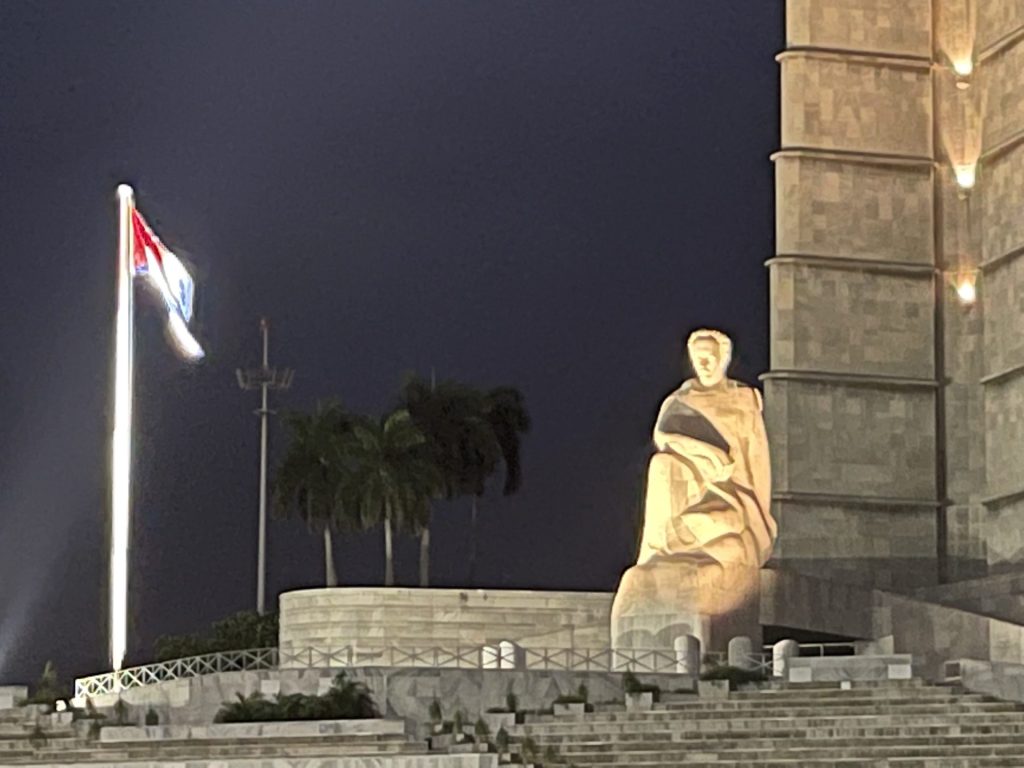
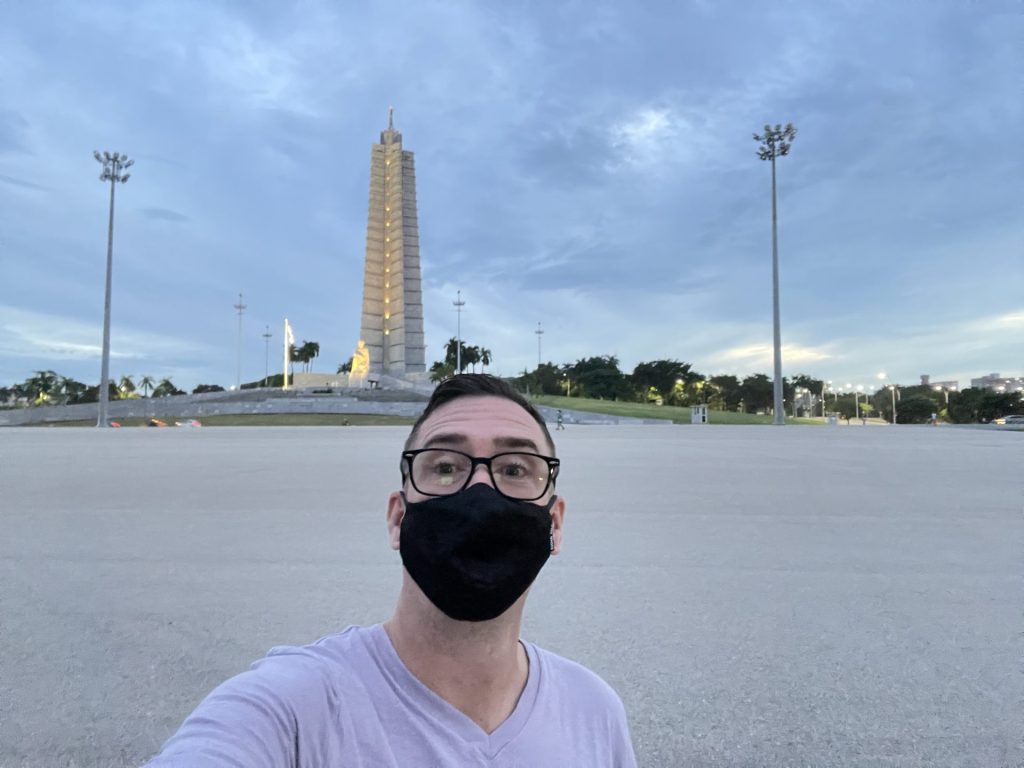
Plaza de la Revolución
The Plaza de la Revolución or Revolution Square, is a tricky one to find with online mapping software. I’ve linked to the correct Google Maps entry. This is likely because tour groups and other operators want you to pay them to visit the site. And they have added multiple map entries purporting to be the same place at different locations all over Havana.
Spoiler alert: The Plaza de la Revolución is just a big empty carpark. It does however serve as a great vantage point on dusk to watch the José Martí Memorial monument, Che Guevara wall Monument and the Mural Camilo Cienfuegos light up at night.
And in true Cuban style, the monuments are located on government buildings and facilities. And you aren’t technically supposed to take photos of government buildings or government things in Cuba, because it’s illegal.
Both are government buildings in the case of the Che and Cienfuegos monuments which are the Ministerio del Interior and Ministerio de Comunicaciones respectively. The José Martí Memorial also has some sort of communications equipment on top of it.
With all that said, it’s a great evening spot with a cool breeze. Take a coffee and go and watch the monuments light up. Don’t go in the middle of the day because you’ll cook on all that pavement.
Location: Google Maps here.
Price to visit: Free




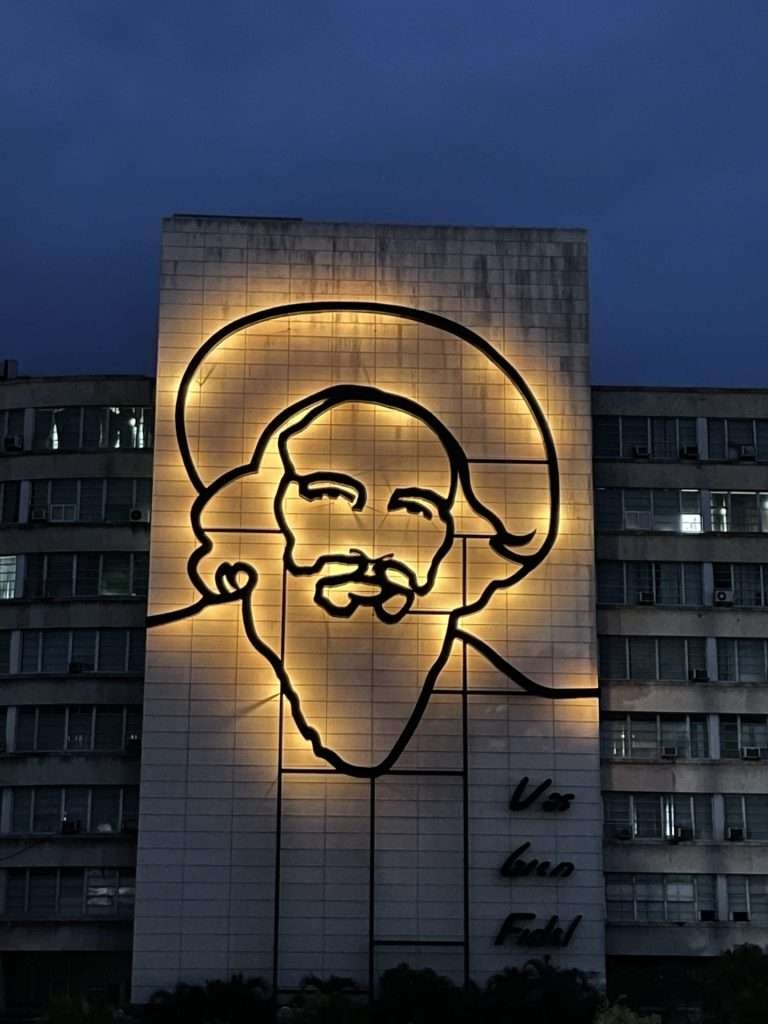
Necrópolis Cristóbal Colón
Necrópolis Cristóbal Colón is one of the most important cemeteries in the world. And it is said to be second only to Recoleta (Buenos Aires) in importance within Latin America.
El Cementerio de Cristóbal Colón provides an unvarnished glimpse into pre-revolutionary society in Cuba. The site covers an area of almost 50 hectares and has over 500 mausoleums.
The Necrópolis is one of the quieter places in Havana, providing a welcome respite from the chaos that is Havana. It’s worth taking a walk through Cristóbal Colón for its historical significance.
For a more detailed account of Necrópolis Cristóbal Colón.
Location: Google Maps here.
Price to visit: Free

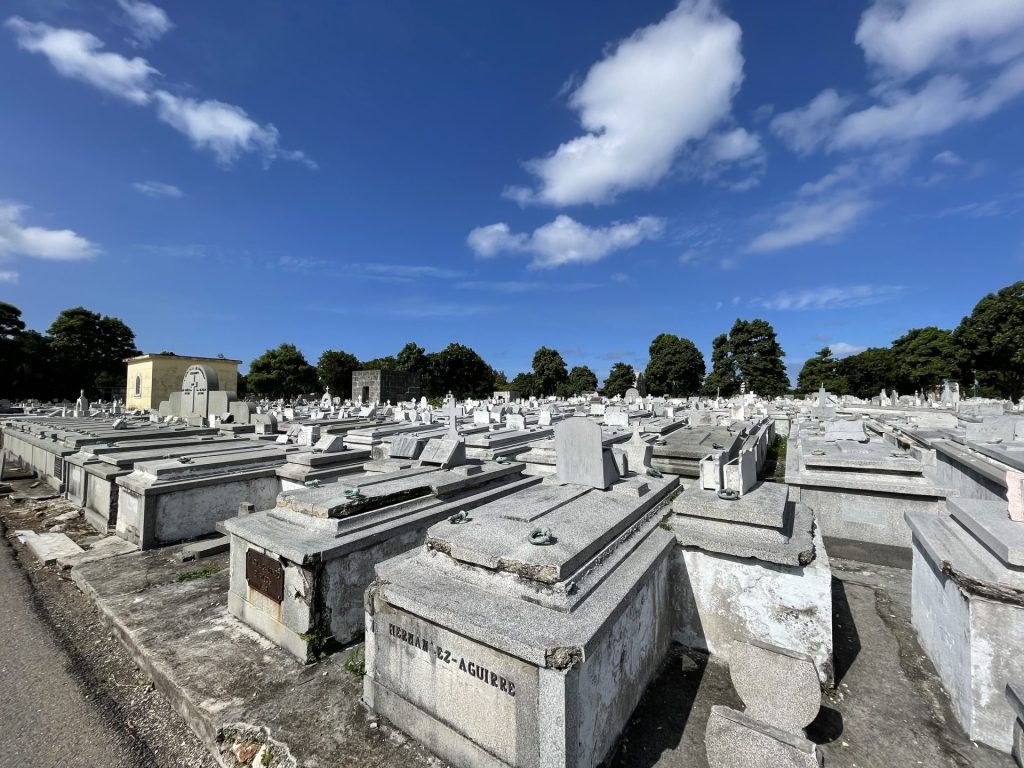

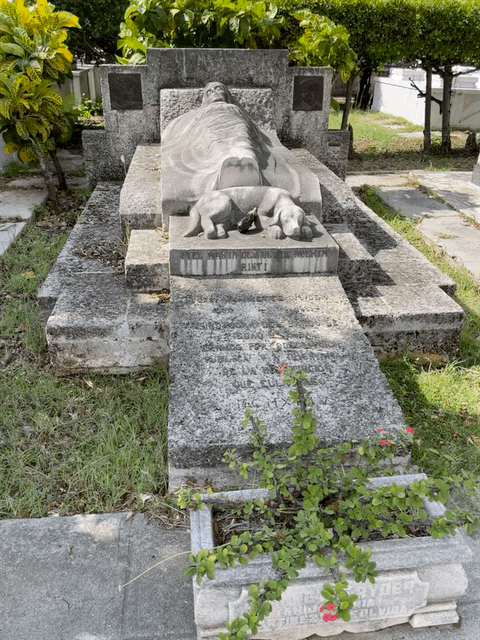
Malecón de Habana
The Malecón is Havana’s seawall that stretches for 8 km (5 miles). The Malecón runs from the mouth of the Port of Havana in Old Havana, past Vedado to the mouth of the Almendares River.
Built between 1901 and 1902, the Malecón today serves as both a main arterial road through Havana and a favored meeting place. In the late afternoon and early evening, you can wander along the miles long Malecón with a drink and enjoy the cool sea breeze, while watching the fisherman and old cars roll by.
It’s a great place to walk but beware of the man sized holes in parts of the Malecón. Particularly around the Old Town sections. You don’t want to fall through onto the rocks and into a large sea swell. And when the sea is angry, watching the waves break over the Malecón from a cafe or restaurant nearby is relaxing.
Location: Google Maps here.
Price to visit: Free

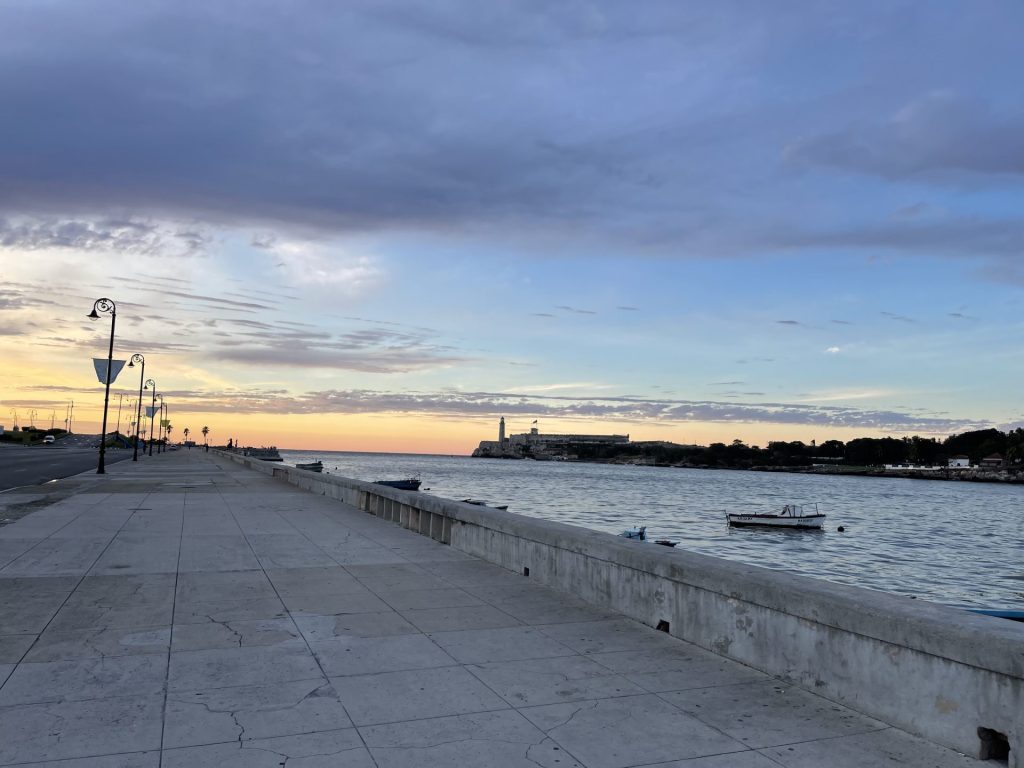
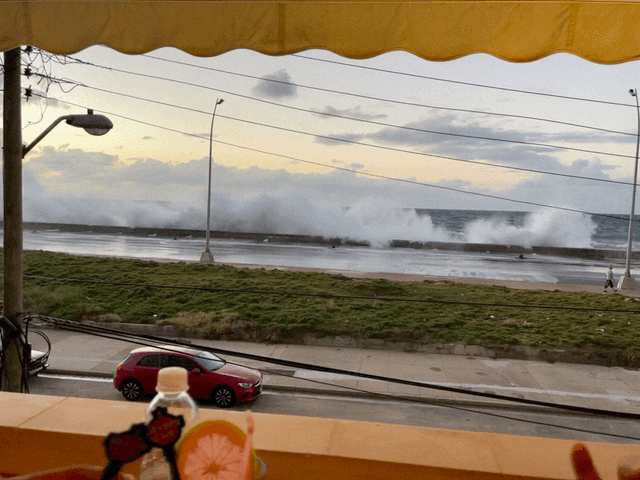
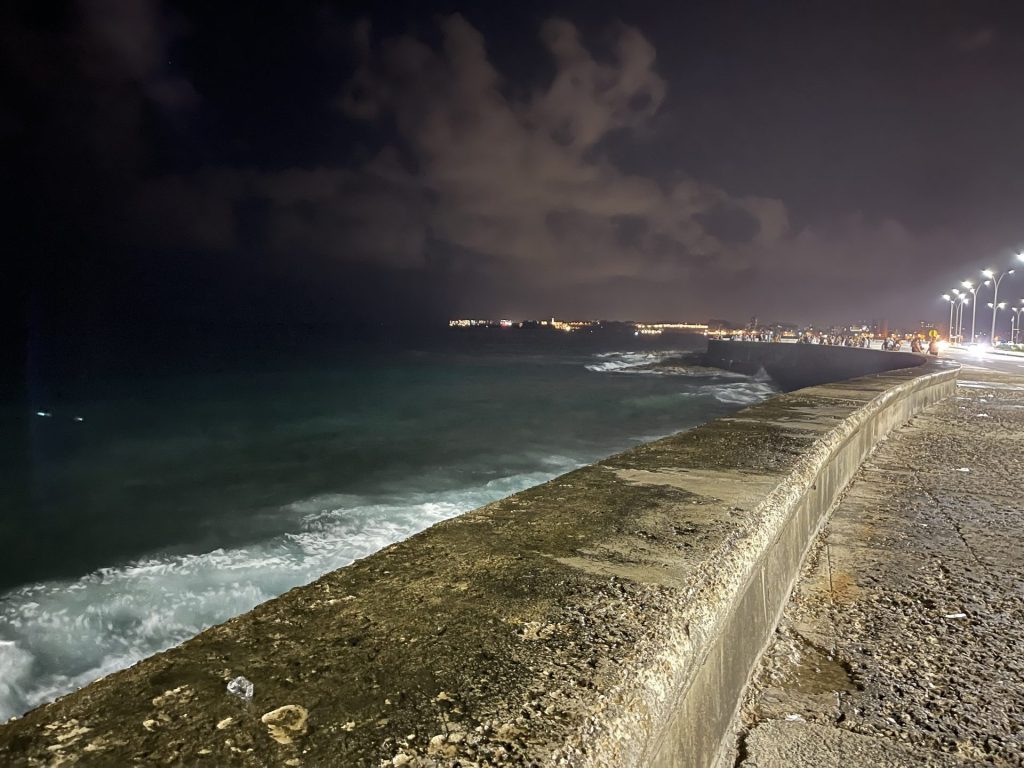
Playa Santa Maria del Mar
Playa Santa Maria del Mar is located just 25km from Havana and is the beach where locals with transport go on a weekend. This is one of the best beaches near to Havana. The water is crystal clear and warm year round.
If going to Playa Santa Maria del Mar, it’s best to make a day trip out of it and to take food and drinks. There are limited options for food and beer in Playa Santa Maria del Mar.
Hire a car for a few thousand CUP and the driver will wait all day and drive you back to Havana when you’re finished at the beach. Don’t expect to be able to get a taxi easily from Playa Santa Maria del Mar back to Havana, if you haven’t organized a driver in advance.
I found a group of locals going to Playa Santa Maria del Mar. And they supplied the car. While I sourced the beer.
Location: Google Maps here.
Price: The beach is free. Transport costs are dependent on your situation.
Paid Option: The private classic car beach day trip can take you to local beaches. Or all the way out to the Bay of Pigs!

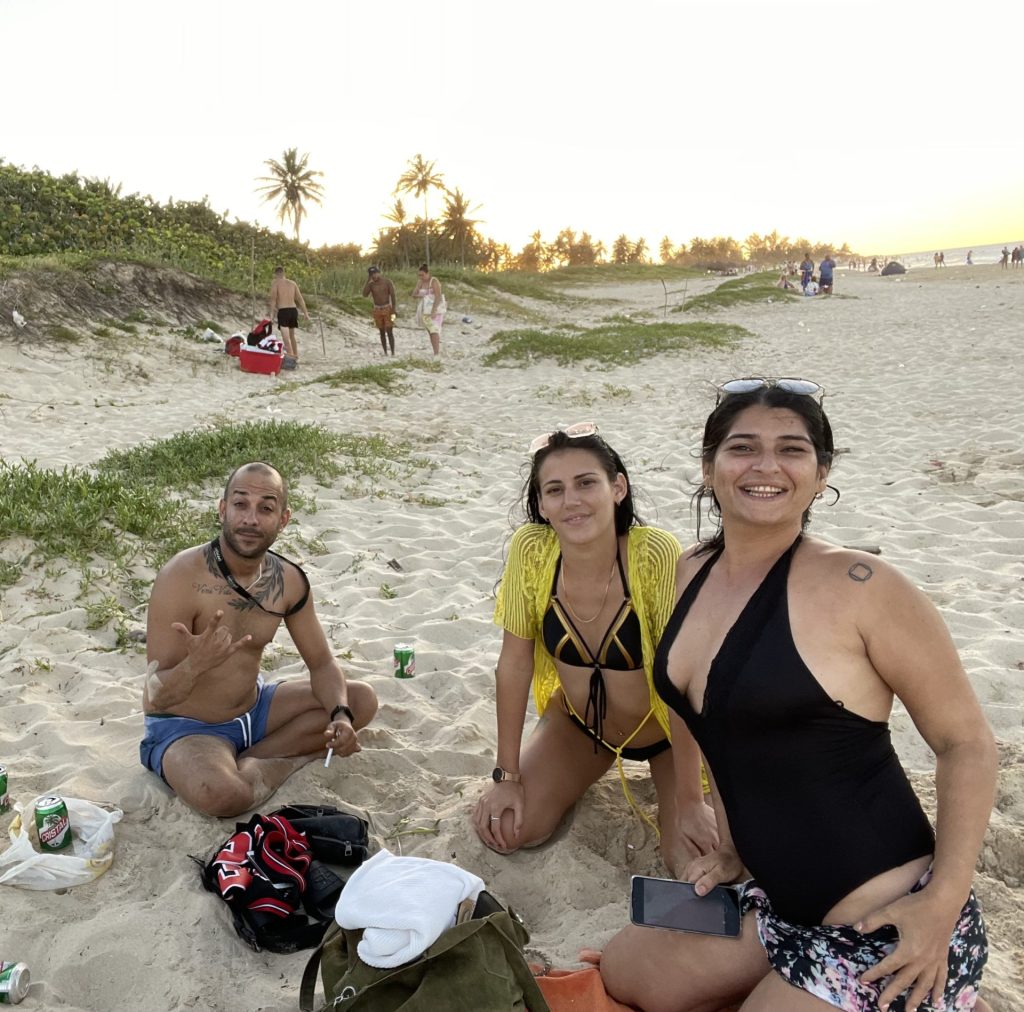
The Real Cost Of Doing Things in Havana!
To visit all 18 attractions in this list cost me less than $100USD. I go to Cuba and stay in Havana for months at a time, and I’ve visited each site many times. I’m able to keep my budget low, because I use a combination of free tours and I use La Nave (Cuba’s Uber) for transport.
Most of the $100 I spent visiting the sites was spent on transport to and from sites using La Nave. And beer, lot’s of beer. Beer was by far the most expensive item and made a day at Playa Santa Maria del Mar the most expensive item on this list. For the teetotalers, that wouldn’t be a problem.
I’d recommend booking tickets and free tours ahead of your arrival in Havana. Because the free tours are limited in number and if a cruise ship rolls into port, they can quickly book out. As they’re free, you can always cancel them if you change your plans.
With this list you can go about seeing the most important tourist sites, while avoiding overpriced tour packages. And for more things to do and see in Cuba, try these other articles:
- The best free tours in Havana Cuba
- The top 10 tours in Havana Cuba
- Visiting Viñales from Havana
- Getting to Varadero from Havana
- The best restaurants in Havana Cuba
- The Uber in Cuba – La Nave!
- Example 48 hour itinerary for Havana and what I’d do.
Bonus Tip: Walking around the National Capital building (el Capitolio) by day and night can yield some excellent photo opportunities. Plus it’s free! Or if you’re more adventurous, get a La Nave out to Guanabacoa and visit Finca Vista Hermosa!
Where Can I Get More Information About Cuba?
I’ve made my Complete Guide To Traveling Cuba available on this website. And I recommend you read it, before traveling to Cuba. It will help you navigate Cuba and Cuban society.
My Cuba travel guide will save you a lot of time and money on your next trip to Cuba. Cuba is not the sort of destination in which you can arrive unprepared. Read the most complete Cuba Travel Guide.
